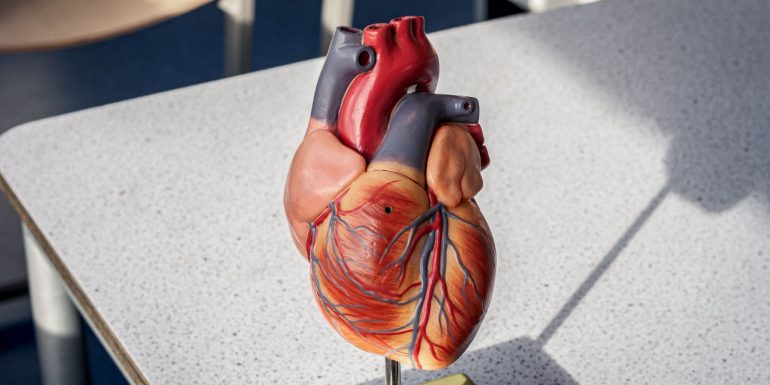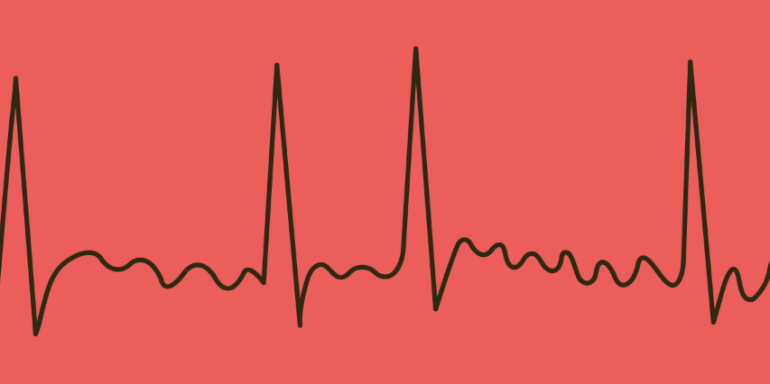
An overview of cardiovascular diseases
Our heart may tire due to underlying cardiovascular disease. Seven typical diseases of the cardiovascular system have been briefly summarised for you.
The heart continuously pumps blood through our vessels and supplies our body, specifically our organs and the brain, with oxygen. Our heart may tire due to underlying cardiovascular disease. Seven typical diseases of the cardiovascular system have been briefly summarised for you.
High blood pressure
High blood pressure is a cardiovascular disease wherein the pressure exerted on the arterial walls is too high. This in turn damages the arteries and strains the body’s organs. Stroke, angina pectoris (tightness or pain in the chest) or a heart attack are common complications of high blood pressure. There are several risk factors for high blood pressure, including an unbalanced diet, a sedentary lifestyle or stress. Patients generally do not realise they have high blood pressure, while dizziness, headache or tinnitus may occur rarely if the blood pressure is too high. Learn more about high blood pressure here.
Arteriosclerosis
In this condition, the arteries undergo pathological changes due to fat deposition, hardening, calcification and inflammatory processes. Deposits or plaques develop along arterial walls in the heart, which may narrow or even occlude these vessels. Blood flow through these arteries is thereby either reduced or ceases completely. Arteriosclerosis develops over years or decades.
Signs
Arteriosclerosis develops without noticeable signs and is evident only when advanced, such as by the occurrence of angina or a heart attack (link to blog article on heart attack), stroke, renal failure or circulatory disturbances in the legs.
Modes of treatment
Arteriosclerosis cannot be reversed. Treatment is aimed at preventing further progression of the disease. A healthy lifestyle is important. The treatment of risk factors such as high cholesterol, high blood pressure and diabetes also help in preventing or even stopping progression of the disease. Medication or angioplasty, that is, dilatation of narrowed vessels or stent implantation, may be used depending on the situation. An operation may be necessary in certain cases.
Narrowing or occlusion of coronary vessels
Narrowing of coronary vessels, also termed coronary heart disease, may result in a heart attack. This may in turn lead to cardiac and circulatory arrest (sudden cardiac death). Fat deposition, hardening or calcification (also termed arteriosclerosis) result in narrowing of the coronary arteries. Coronary heart disease results in an inadequate blood supply to heart muscles.
Signs
A feeling of tightness and a pressure sensation in the chest on exertion (angina) or at rest (heart attack)
Treatment
Angina pectoris: Medication reduces oxygen consumption. Narrowed vessels are then dilated by a catheter and a bypass operation.
In case of an infarct: The occluded arteries must be re-opened as rapidly as possible. This is achieved either with the aid of a catheter with balloon and a stent or rarely by means of a bypass operation.
Heart failure
The heart is overburdened in heart failure and can no longer adequately pump blood through the circulatory system. The patient tires easily and suffers from shortness of breath. The condition is nearly always caused by an underlying disease of the cardiovascular system, most commonly an infarct or high blood pressure, but may also be due to congenital or valvular heart disease.
Signs
Shortness of breath, fatigue, weakness, water retention in the legs or in the lungs.
Modes of treatment
- Easing the strain on cardiac muscle by medication
- Heart transplantation
- Implantation of a pump to support the heart
- Implantation of a defibrillator
Cardiac arrhythmias
In a cardiac arrhythmia, the heart beats either too fast (> 100 / min), too slowly (< 60 / min) or irregularly. The commonest type of arrhythmia is atrial fibrillation, which creates an electrical storm in the atria, causing the heart to beat irregularly and often irregularly, either intermittently or continuously. This may be triggered by a variety of causes, most commonly cardiovascular diseases such as high blood pressure, heart attack, valvular heart disease or heart failure. Alcohol, caffeine, drugs or medication may also cause a cardiac arrhythmia. The risk of a cardiac arrhythmia increases with age.
Signs
- Rhythm too slow: Dizziness or generalised weakness
- Rhythm too fast: Palpitations or generalised weakness
Modes of treatment
- Medication (e.g. blood thinners)
- Affected heart tissue is ablated with a catheter
- Implantation of a cardiac pacemaker
- Implantation of a defibrillator
Valvular heart disease
Humans have four cardiac valves, which ensure that blood flows in the right direction in the body. These valves may become adherent, thickened or calcified. In such cases, they no longer open adequately, thereby restricting the flow of blood, in turn reducing the delivery of oxygen (heart valve stenosis). Valves may also be widened or torn, due to which they do not close adequately and blood flows in a reverse direction with each heart beat (incompetence). Diseases of cardiac valves may be due to a variety of causes, including infectious diseases, age-related calcification, congenital valve defects as well as hereditary diseases.
Signs
- Shortness of breath, palpitations, severe fatigue, circulatory collapse
Modes of treatment
- Replacement of the cardiac valve via a catheter or by an operation
- Reconstruction of the cardiac valve by an operation
Pericarditis
Pericarditis is an inflammation of the two layers enclosing the heart, with accumulation of large amounts of fluid between them (effusion), and is most commonly due to viral infections. It may however also be caused by bacterial infections, heart attack, renal failure or tumours.
Signs
- Position-dependent chest pain, shortness of breath
Modes of treatment
Acute pericarditis is usually curable with the correct treatment and monitoring in hospital. Required treatment, including medication, depends on the specific clinical picture. Pericarditis may become chronic if it is not treated, and may result in damage to cardiac muscle as well as of the kidneys or liver.

Dr Robert C. Keller is the Managing Director of the Berne-based Swiss Heart Foundation. He has long-standing experience in the field of cardiovascular diseases and heads up the areas of research and prevention at the foundation. Dr Keller provided the editorial team with advice.
Further information



Newsletter
Find out more about current health issues every month and get all the information you need about our attractive offers from all Helsana Group companies * delivered by e-mail to read whenever it suits you. Our newsletter is free of charge and you can sign up here:
We did not receive your information. Please try again later.
* The Helsana Group comprises Helsana Insurance Company Ltd, Helsana Supplementary Insurances Ltd and Helsana Accidents Ltd.